Easy Cucumber Gardening Hacks: Imagine biting into a crisp, refreshing cucumber, bursting with flavor, knowing you grew it yourself! There’s something incredibly satisfying about nurturing a plant from seed to harvest, and cucumbers are surprisingly easy to cultivate with the right know-how. For centuries, cucumbers have been a staple in diets around the world, with evidence suggesting their cultivation dates back over 3,000 years! From ancient Rome to modern-day salads, this versatile veggie has earned its place in our gardens and on our plates.
But let’s be honest, sometimes gardening can feel a little overwhelming, especially when you’re short on space or time. That’s where these easy cucumber gardening hacks come in! I’m going to share some of my favorite DIY tricks and tips that will help you grow a bumper crop of cucumbers, even if you’re a complete beginner. Whether you’re dealing with limited sunlight, pesky pests, or just want to maximize your yield, these simple solutions will make your cucumber gardening journey a breeze. Get ready to impress your friends and family with your homegrown cucumbers – let’s get started!
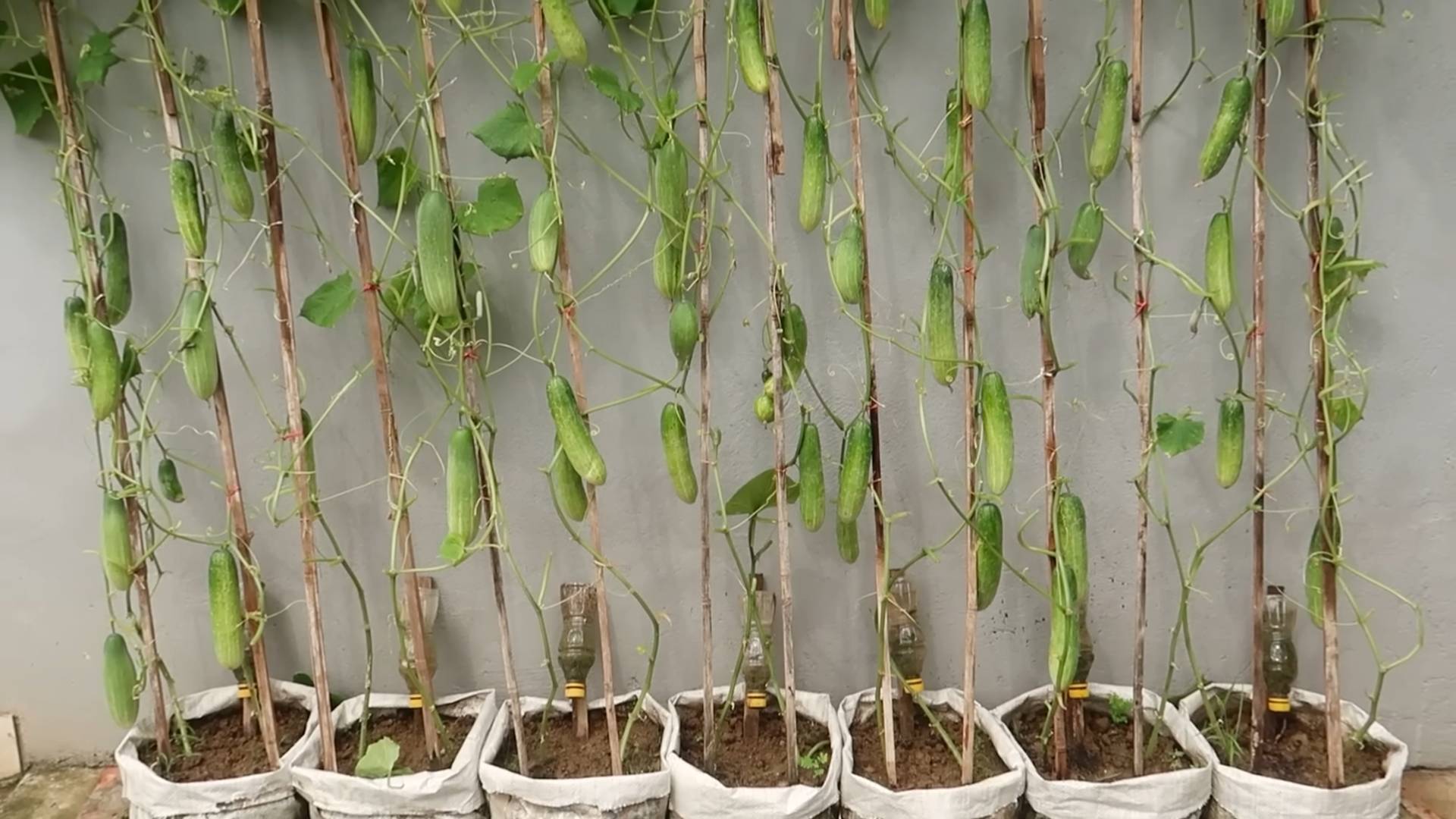
Grow a Cucumber Bonanza: Easy DIY Gardening Hacks!
Okay, cucumber lovers, let’s get real. Nothing beats a crisp, homegrown cucumber, right? But sometimes, growing them can feel like a battle against pests, diseases, and just plain finickiness. Fear not! I’m here to share some super easy DIY gardening hacks that will have you swimming in cucumbers before you know it. These are tried and tested methods I’ve used in my own garden, and they’ve made a HUGE difference. Let’s dive in!
Choosing the Right Cucumber Variety
Before we even get our hands dirty, let’s talk about cucumber varieties. Not all cucumbers are created equal! Some are better suited for pickling, others for slicing, and some are even burpless (a blessing for those with sensitive stomachs!).
* Pickling Cucumbers: These are shorter and stubbier, perfect for making crunchy pickles. Look for varieties like ‘National Pickling’ or ‘Boston Pickling’.
* Slicing Cucumbers: These are longer and smoother, ideal for salads and sandwiches. ‘Marketmore 76’ and ‘Straight Eight’ are popular choices.
* Burpless Cucumbers: These are bred to have lower levels of cucurbitacin, the compound that can cause bitterness and digestive upset. ‘Sweet Slice’ and ‘Armenian’ are great options.
* Bush Varieties: If you’re short on space, consider bush varieties like ‘Spacemaster’ or ‘Bush Champion’. They’re compact and perfect for containers.
Think about how you plan to use your cucumbers and choose a variety that suits your needs. It makes a world of difference!
Hack #1: The Trellis Triumph – Vertical Gardening for Cucumber Success
Cucumbers are natural climbers, and giving them a trellis is one of the best things you can do for them. It saves space, improves air circulation (reducing disease risk), and makes harvesting a breeze.
Why a Trellis is a Game-Changer:
* Space Saving: Cucumbers can take up a lot of ground space. A trellis allows them to grow vertically, maximizing your garden area.
* Improved Air Circulation: Better airflow around the plants reduces the risk of fungal diseases like powdery mildew.
* Easier Harvesting: No more bending and searching under sprawling vines! The cucumbers are right there, hanging down for easy picking.
* Cleaner Fruit: Trellised cucumbers are less likely to come into contact with soil, reducing the risk of rot and pests.
Building a Simple DIY Cucumber Trellis:
This trellis is super easy and inexpensive to build.
Materials You’ll Need:
* Four 6-foot wooden stakes (or bamboo poles)
* Heavy-duty twine or garden netting
* Hammer
* Scissors
Step-by-Step Instructions:
1. Pound in the Stakes: Arrange the stakes in a square or rectangular shape around your cucumber plants, spacing them about 2-3 feet apart. Use a hammer to drive the stakes firmly into the ground, making sure they’re stable.
2. Create the Trellis: Tie the twine or netting to one of the stakes at the bottom. Then, weave it back and forth between the stakes, creating a grid pattern. Secure the twine or netting to each stake as you go.
3. Continue Weaving: Continue weaving the twine or netting until you reach the top of the stakes. Make sure the grid is tight enough for the cucumber tendrils to grab onto.
4. Secure the Top: Tie off the twine or netting securely to the top of the stakes.
5. Guide the Vines: As your cucumber plants grow, gently guide their tendrils onto the trellis. They’ll naturally start to climb on their own. You might need to initially tie some of the vines to the trellis to get them started.
That’s it! You’ve created a simple yet effective cucumber trellis.
Hack #2: Epsom Salt Elixir – The Secret to Bushier, More Productive Plants
Epsom salt is a gardener’s best friend! It’s rich in magnesium sulfate, which is essential for plant growth. Magnesium helps plants absorb nutrients, while sulfur promotes chlorophyll production (the stuff that makes plants green and healthy).
Why Epsom Salt Works Wonders:
* Boosts Nutrient Absorption: Magnesium helps plants absorb essential nutrients like nitrogen, phosphorus, and potassium.
* Promotes Chlorophyll Production: Sulfur is crucial for chlorophyll production, which is essential for photosynthesis (the process by which plants convert sunlight into energy).
* Prevents Leaf Yellowing: Magnesium deficiency can cause leaf yellowing (chlorosis). Epsom salt helps prevent this.
* Encourages Bushier Growth: Epsom salt promotes strong, healthy growth, leading to bushier plants and more cucumbers.
How to Use Epsom Salt for Cucumbers:
1. At Planting Time: When planting your cucumber seedlings, add a tablespoon of Epsom salt to the bottom of the planting hole. Mix it in with the soil before placing the seedling in the hole.
2. As a Foliar Spray: Mix 1 tablespoon of Epsom salt with 1 gallon of water. Pour the solution into a spray bottle and spray the leaves of your cucumber plants every two weeks. Do this in the morning or evening to avoid burning the leaves in direct sunlight.
3. As a Soil Drench: Mix 1 tablespoon of Epsom salt with 1 gallon of water. Pour the solution around the base of your cucumber plants every two weeks.
Important Note: Don’t overdo it with the Epsom salt! Too much can be harmful to your plants. Stick to the recommended dosage.
Hack #3: Coffee Grounds Compost – A Caffeine Boost for Your Cucumbers
Don’t throw away those coffee grounds! They’re a fantastic amendment for your cucumber plants. Coffee grounds are rich in nitrogen, which is essential for leafy growth. They also improve soil drainage and aeration.
Why Coffee Grounds are a Gardener’s Gold:
* Rich in Nitrogen: Nitrogen is a key nutrient for plant growth, promoting lush, green foliage.
* Improves Soil Drainage: Coffee grounds help break up compacted soil, improving drainage and aeration.
* Attracts Earthworms: Earthworms love coffee grounds! They help aerate the soil and improve its fertility.
* Slightly Acidic: Cucumbers prefer slightly acidic soil, and coffee grounds can help lower the pH of your soil.
How to Use Coffee Grounds for Cucumbers:
1. Composting: Add coffee grounds to your compost pile. They’ll break down over time, creating a nutrient-rich compost that you can use to amend your soil.
2. Direct Application: Sprinkle coffee grounds around the base of your cucumber plants. Gently work them into the soil.
3. Coffee Ground Tea: Brew a weak “tea” by soaking coffee grounds in water overnight. Use this tea to water your cucumber plants.
Important Note: Use coffee grounds sparingly. Too much can make the soil too acidic. Also, make sure to use used coffee grounds, as fresh grounds can be too acidic.
Hack #4: Companion Planting Power – Friends in the Garden
Companion planting is the practice of planting different plants together that benefit each other. Some plants can repel pests, attract beneficial insects, or improve soil conditions for their neighbors.
Great Cucumber Companions:
* Marigolds: These bright flowers repel nematodes and other soil pests.
* Nasturtiums: These edible flowers attract aphids away from your cucumbers.
* Dill: Dill attracts beneficial insects like ladybugs and lacewings, which prey on aphids and other pests.
* Beans: Beans fix nitrogen in the soil, which benefits cucumbers.
* Radishes: Radishes deter cucumber beetles.
How to Implement Companion Planting:
Simply plant these companion plants near your cucumber plants. You can interplant them between the cucumber rows or plant them around the perimeter of your cucumber patch.
Hack #5: The Beer Trap – A Slug and Snail Solution
Slugs and snails can wreak havoc on cucumber plants, especially young seedlings. They love to munch on the leaves, leaving behind unsightly holes. A beer trap is a simple and effective way to get rid of these slimy pests.
Why Beer Traps Work:
Slugs and snails are attracted to the yeast in beer. They crawl into the trap and drown.
How to Make a Beer Trap:
1. Find a Container: Use a shallow container, such as a plastic container or a tuna can.
2. Bury the Container: Dig a hole in the ground near your cucumber plants and bury the container so that the rim is level with the soil surface.
3. Fill with Beer: Pour beer into the container, leaving about an inch of space at the top.
4. Check and Empty: Check the trap every day or two and empty it when it’s full of slugs and snails. Refill
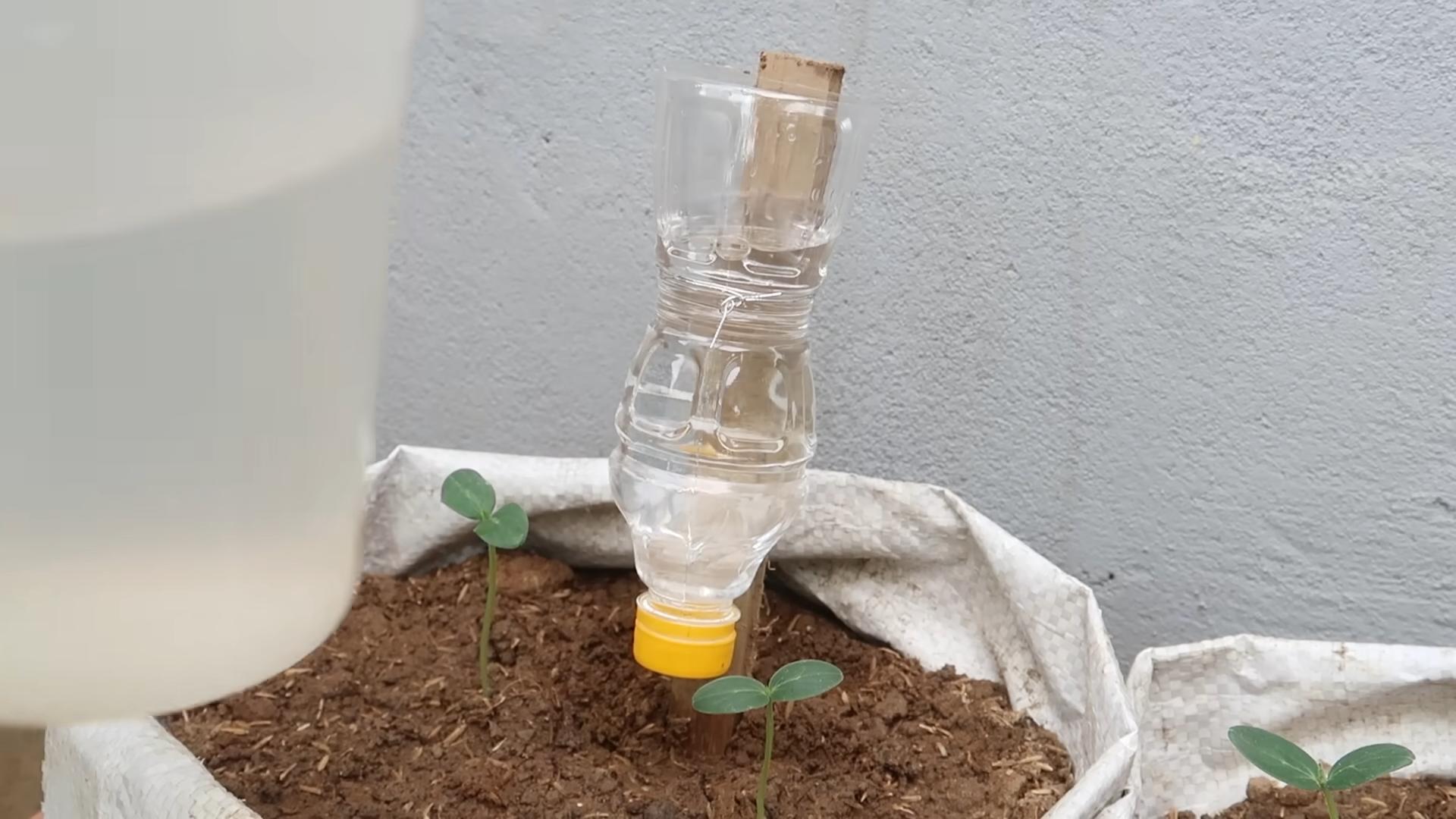
Conclusion
So, there you have it! These easy cucumber gardening hacks are more than just shortcuts; they’re a pathway to a more abundant, healthier, and ultimately, more rewarding cucumber harvest. We’ve explored simple yet effective techniques, from maximizing sunlight with strategic planting to creating a DIY trellis system that saves space and promotes air circulation. We’ve delved into the importance of consistent watering and explored natural pest control methods that keep your cucumbers thriving without harmful chemicals.
Why is this a must-try? Because growing your own cucumbers shouldn’t be a daunting task. These hacks are designed to demystify the process, making it accessible to even the most novice gardener. Imagine the satisfaction of biting into a crisp, juicy cucumber that you nurtured from seed to table. Think of the money you’ll save by reducing your reliance on store-bought produce. And consider the environmental benefits of growing your own food, reducing your carbon footprint and supporting sustainable practices.
But the beauty of gardening lies in its adaptability. Feel free to experiment with these techniques and tailor them to your specific needs and environment. For instance, if you live in a particularly hot climate, consider providing your cucumbers with some afternoon shade to prevent sunscald. If you’re short on space, try growing your cucumbers in containers on a balcony or patio. You can even explore different varieties of cucumbers, from the classic slicing cucumber to the smaller, sweeter pickling cucumber.
Consider companion planting! Basil, marigolds, and nasturtiums are excellent companions for cucumbers, helping to deter pests and attract beneficial insects. You can also try using coffee grounds as a natural fertilizer, providing your cucumbers with a boost of nitrogen.
Don’t be afraid to get your hands dirty and embrace the learning process. Gardening is a journey, not a destination. There will be challenges along the way, but the rewards are well worth the effort.
We wholeheartedly encourage you to try these easy cucumber gardening hacks and witness the difference they can make in your garden. Start small, be patient, and most importantly, have fun!
And now, we want to hear from you! Share your experiences, successes, and even your failures in the comments below. What are your favorite cucumber gardening tips and tricks? What challenges have you faced, and how did you overcome them? Let’s create a community of cucumber enthusiasts, sharing our knowledge and supporting each other on our gardening journeys. Your insights could be invaluable to other readers, helping them to achieve their own cucumber-growing dreams. So, get out there, get gardening, and let’s grow some amazing cucumbers together! Remember, a little effort goes a long way when it comes to enjoying the fruits (or vegetables!) of your labor. Happy gardening!
FAQ
What are the most common problems when growing cucumbers, and how do these hacks address them?
The most common problems include pests (like cucumber beetles and squash bugs), diseases (like powdery mildew), inconsistent watering, and lack of space. These easy cucumber gardening hacks directly address these issues. For example, companion planting with marigolds helps deter pests naturally. Proper trellising improves air circulation, reducing the risk of powdery mildew. Consistent watering techniques, like using soaker hoses, prevent blossom end rot. And vertical gardening with trellises maximizes space, even in small gardens.
How often should I water my cucumbers, and what’s the best way to do it?
Cucumbers need consistent moisture, especially during fruiting. Aim to water deeply at least two to three times per week, or more often during hot, dry weather. The best way to water is at the base of the plant, avoiding wetting the foliage, which can encourage fungal diseases. Soaker hoses or drip irrigation are ideal for delivering water directly to the roots. Check the soil moisture regularly; it should feel moist but not waterlogged. A good rule of thumb is to water when the top inch of soil feels dry.
What kind of trellis is best for cucumbers, and how do I build one?
There are several types of trellises suitable for cucumbers, including A-frame trellises, vertical trellises made from netting or wire, and even repurposed materials like old ladders or pallets. The best type depends on your space and resources. A simple vertical trellis can be built using wooden stakes and chicken wire or netting. Drive the stakes into the ground about 2-3 feet apart, then attach the wire or netting to the stakes. Ensure the trellis is sturdy enough to support the weight of the mature cucumber vines. A-frame trellises offer more stability and can be built using angled wooden supports connected at the top.
How can I prevent pests from attacking my cucumber plants without using harmful chemicals?
There are several natural pest control methods you can use. Companion planting with marigolds, basil, and nasturtiums can deter pests. Regularly inspect your plants for pests and remove them by hand. You can also use insecticidal soap or neem oil, which are natural and effective against many common cucumber pests. Floating row covers can protect young plants from pests, but remove them once the plants start flowering to allow for pollination. Encouraging beneficial insects, like ladybugs and lacewings, can also help control pest populations.
What kind of fertilizer should I use for cucumbers, and how often should I fertilize them?
Cucumbers are heavy feeders and benefit from regular fertilization. Use a balanced fertilizer (e.g., 10-10-10) or a fertilizer specifically formulated for vegetables. Apply fertilizer every 2-3 weeks, following the instructions on the product label. You can also amend the soil with compost or well-rotted manure before planting to provide a slow-release source of nutrients. Avoid over-fertilizing, as this can lead to excessive foliage growth and reduced fruit production.
My cucumber plants are producing flowers, but no cucumbers. What could be the problem?
This is a common issue, and the most likely cause is poor pollination. Cucumbers need to be pollinated to produce fruit. If you’re growing cucumbers indoors or in an area with limited bee activity, you may need to hand-pollinate them. Use a small paintbrush to transfer pollen from the male flowers (which have a long, thin stem) to the female flowers (which have a small cucumber-like structure behind the flower). Other potential causes include high temperatures, which can inhibit pollination, and nutrient deficiencies.
How do I know when my cucumbers are ripe and ready to harvest?
Cucumber ripeness depends on the variety. Generally, cucumbers are ready to harvest when they are firm, green, and have reached the desired size for their variety. Overripe cucumbers will turn yellow or orange and become bitter. Check the seed packet or plant tag for specific harvesting guidelines for your cucumber variety. Regular harvesting encourages continued fruit production.
Can I grow cucumbers in containers, and if so, what size container should I use?
Yes, cucumbers can be successfully grown in containers. Choose a large container, at least 5 gallons in size, to provide enough room for the roots to grow. Ensure the container has drainage holes to prevent waterlogging. Use a high-quality potting mix and provide a trellis or support for the vines to climb. Container-grown cucumbers may need more frequent watering and fertilization than those grown in the ground.
What are some good companion plants for cucumbers?
Excellent companion plants for cucumbers include:
* **Marigolds:** Deter nematodes and other pests.
* **Basil:** Repels aphids, whiteflies, and other insects.
* **Nasturtiums:** Attract aphids away from cucumbers and attract beneficial insects.
* **Beans:** Fix nitrogen in the soil, benefiting cucumbers.
* **Radishes:** Deter cucumber beetles.
* **Dill:** Attracts beneficial insects like ladybugs and hoverflies.
Avoid planting cucumbers near aromatic herbs like sage, as they can inhibit cucumber growth.
How can I save seeds from my cucumbers for next year?
Saving cucumber seeds requires a bit of extra effort, as cucumbers are often cross-pollinated. To ensure true-to-type seeds, you’ll need to isolate your cucumber plants from other cucumber varieties. Allow a few cucumbers to fully ripen on the vine until they turn yellow or orange. Scoop out the seeds and pulp, and place them in a jar with water. Let the mixture ferment for a few days, stirring occasionally. The viable seeds will sink to the bottom, while the non-viable seeds and pulp will float. Rinse the viable seeds thoroughly and spread them out on a paper towel to dry completely. Store the dried seeds in an airtight container in a cool, dark place.

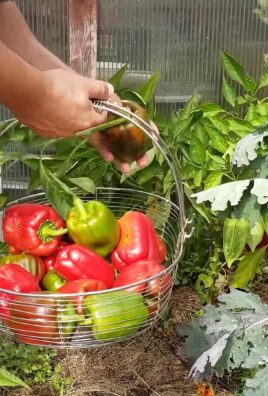
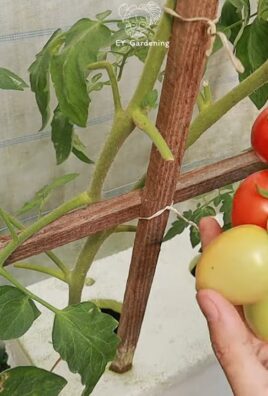
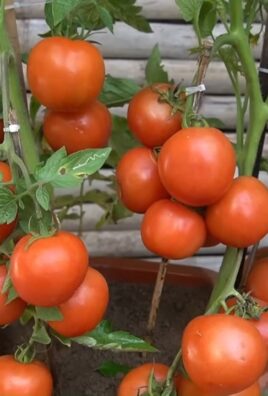
Leave a Comment